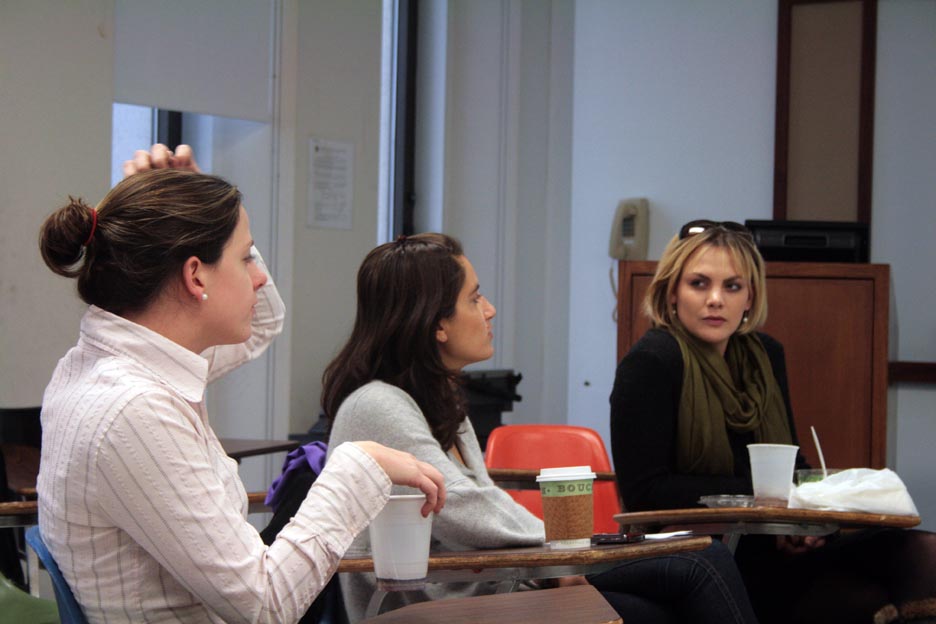Student Views of College Drinking Exaggerated
Perceived Rates of College Drinking Are Higher than Statistics Report; In Response, Students Drink More
June 5, 2011

Published: November 20, 2008
Recent United States Department of Education (USDE) reports attribute an increase in drinking on college campuses to students’ “exaggerated views” of alcohol consumption among their fellow classmates. The results of last year’s Core Survey, which asks students about their drinking habits as well as about their perceptions of their classmates’ drinking habits, show that the student body of Fordham College at Lincoln Center (FCLC) is no exception to this trend.
According to the results of the 2007 Core Survey, 48.2 percent of students reported drinking “once a week,” while 88.4 percent of students answered that the average student drinks “once a week or more.”
Zain Nadeem, FCLC ’11, said that he drinks “typically once a month, but even then, I usually only have three or four drinks.” Nadeem said that he drinks less than he did in high school and that the average student “probably [drinks] a lot more than me.”
Katie Higgins, FCLC ’09, reported that she drinks “about once a week” and usually only drinks “if it’s free” at events such as art openings. However, she believes that the average student drinks “three to four times a week.”
Marshall Buxton, FCLC ’12, said that he drinks “a few glasses of wine, once a week” but stated that he believes that the typical college student drinks twice a week.
“There is a huge disparity between how people self report they are drinking versus what they believe their peers are doing,” said Keith Eldredge, FCLC dean of students.
According to Megan Siemers, assistant director of programming and coordinator of FCLC’s Alcohol and Other Drug Education Program (AODE), this is having an impact on FCLC students’ drinking habits.
Some FCLC students drink primarily in social situations in which the people surrounding them are drinking.
Amanda Moschetti, FCLC ’10, explained her reasoning behind drinking. “[Drinking] is what people are doing; that’s the thing to do…I wouldn’t drink just to drink.”
Even though a binge is defined as four drinks in two hours for women and five to six drinks in two hours for men, Siemers reported that, because of the supposed normality of drinking in college, it is common for students to have five to six drinks in two hours and not classify that as binge drinking.
“That’s still considered binge drinking, but in their eyes, it’s not necessarily,” she said.
Siemers attributes this norm to the wave of what she called “stupid humor” movies—such as “Old School” and “American Pie”—that glorify drinking and have dominated the media for the past decade.
Celia Fisher, the director of the Fordham Center for Ethics Education and a professor of psychology, has done extensive research on adolescent high risk behavior.
She said, “[Students] come in with this high expectation that everybody drinks in college, and that becomes a self-fulfilling prophecy…they feel they have to drink.”
Fisher also said that a majority of students hold this belief, even when “20 percent of students don’t drink at all, and another high percentage drinks rarely.”
Although all college students are largely believed to be heavy drinkers, according to USDE reports, Siemers stated that it is mostly FCLC freshmen—who are newest to the college experience and have the strongest misconception regarding the amount of drinking that will occur—who get caught for drinking and who usually drink to excess.
“A lot of freshmen are coming into a new environment. They tend to use alcohol and drugs as a transitional bond…Students have said it is part of a bonding experience,” she said.
“I don’t drink alone usually…It has to do with [whether] your immediate friends [are drinking],” said Laina Yoswea, FCLC ’09.
According to Siemers, part of FCLC’s AODE curriculum is to include information on the true extent of college drinking to correct any misunderstandings a student may have about alcohol consumption, though she acknowledged that this is not the only means by which AODE educates the student body on substance abuse.
Despite the recent increase in alcohol consumption cited by the USDE, Fisher stated that Fordham is at “the norm” of college drinking. She said that she is familiar with the common misperception of drinking norms among students, as well as the results that it has on the collective student mentality.
“I thought my college life would be a lot crazier in terms of binge drinking…now I have more responsibilities, and it’s not as fun to do anymore; it’s not as cool as it was in high school,” Yoswea said.
“Everyone hypes [college] up to be a reckless four years when you can drink to excess and not have to take responsibility…you get sick of it after a while,” Moschetti said.









